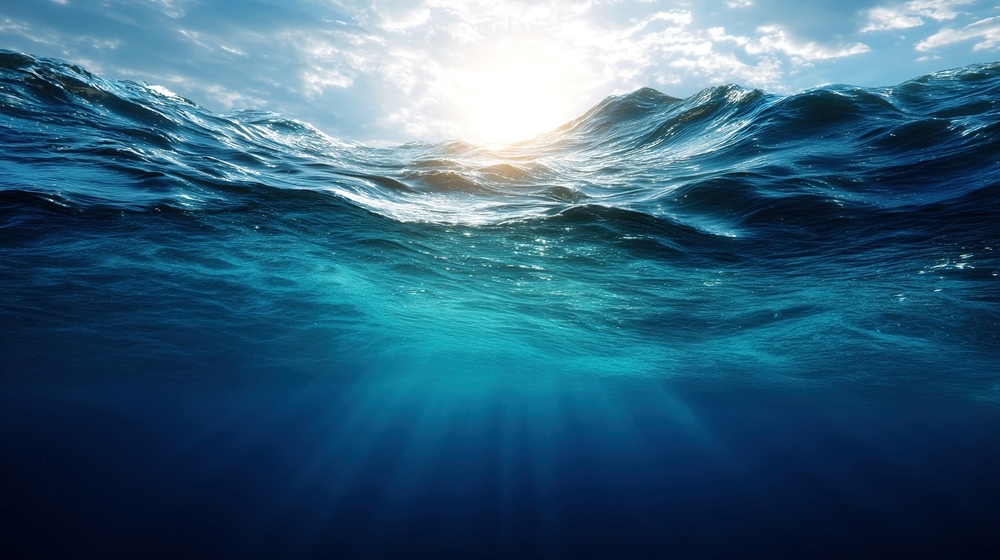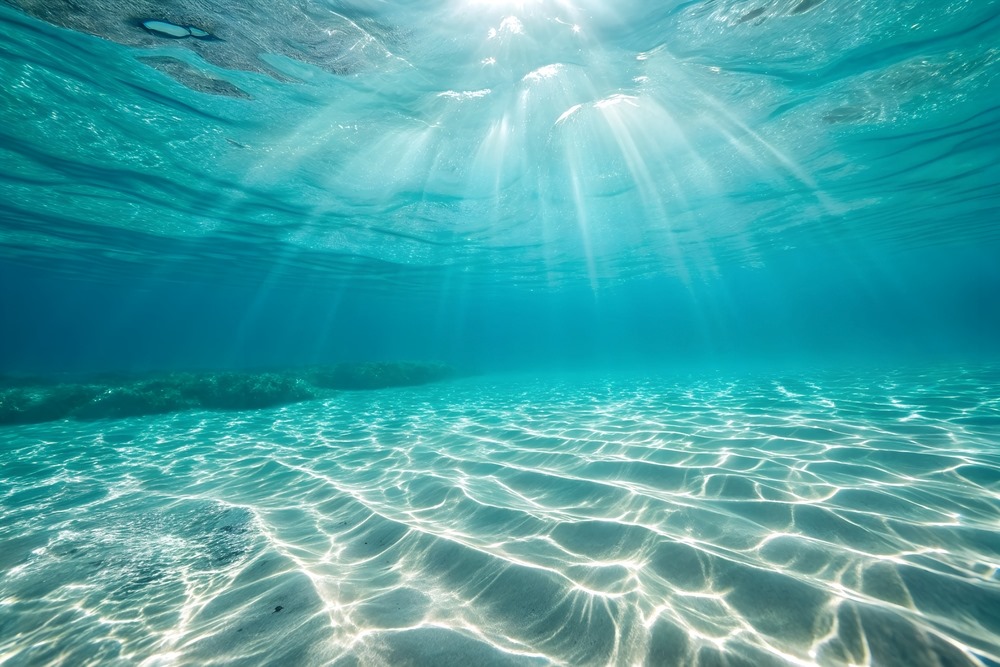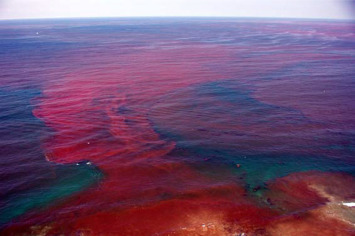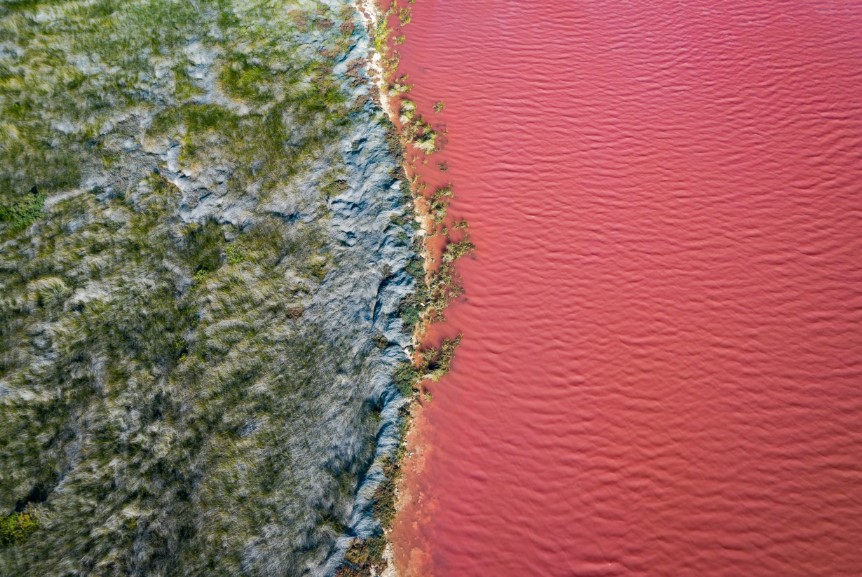The Ocean is vital for life on Earth as it produces over the half world’s oxygen and it also regulates the climate by absorbing the heat and Carbon dioxide and also it helps in analysing weather pattern. But do you all ever noticed, Why is the Ocean Blue?
If we see the total area of Ocean, it is approximately 361 million square kilometers (139 million square miles), which covers about 71% of the planet's surface. But, in all these, there is no proper clues, that’s why does Ocean appears to be in blue colour?
In this article, we will explore to find out the correct with proper scientific answer for “Why is the Ocean Blue in Colour?”
Why is the Ocean Blue?
The ocean looks blue primarily as water absorbs colours in the red part of the light spectrum and reflects the blue wavelengths that scatter and travel through the water. When sunlight enters the ocean, the longer wavelengths like red, orange, and yellow get absorbed quickly, while shorter blue wavelengths penetrate deeper and scatter, giving the ocean its iconic blue hue.

Source: Shutterstock
What are the Scientific reasons for Ocean Blue?
The sky appears to be in blue because of Rayleigh scattering, whchg is a process where sunlight interacts with tiny particles, which are presents in the atmosphere. Shorter wavelengths of light—like blue—scatter more easily than longer ones such as red or yellow, giving the sky its blue color.
During sunrise and sunset, sunlight travels through a thicker layer of the atmosphere, scattering blue and green light away and allowing red and orange hues to dominate.
The ocean looks blue in colour, not because it reflects the sky, but because water absorbs red light more effectively. In deeper water, this absorption is stronger, making the blue color appear more vivid.
How Does Sunlight Affect Ocean Colour?
Sunlight contains all colours of the visible spectrum — red, orange, yellow, green, blue, indigo, and violet.
-
When sunlight hits the ocean, the surface reflects a small portion of it (which may appear blue on a clear day).
-
The rest penetrates the water, and different wavelengths are absorbed at different depths.
-
Red light disappears within the first few meters.
-
Yellow and green go deeper but are also absorbed.
-
Blue light travels the farthest, scattering in all directions and dominating what we see.
| Colour of Light | Depth of Absorption (Approx.) | Effect on Ocean Colour |
| Red | 5 meters | Absorbed quickly, disappears near the surface |
| Yellow/Green | 15–30 meters | Partially absorbed, minimal contribution |
| Blue | 60–100 meters (or more) | Scatters and dominates colour perception |
Does the Ocean Always Look Blue?
No, the colour of the ocean varies based on location, depth, and what’s in the water.
Factors that influence colour include:
-
Phytoplankton: There are many Microscopic plants which are present in the ocens that contain chlorophyll, giving the Oceans a greenish tint.
-
Sediments: Near coasts, suspended sand or mud can make the water brown or murky.
-
Depth: At the Shallow waters of the Oceans due to over sandy seabeds often appear turquoise or light blue in depth of the Ocean.

Source: Shutterstock
-
Sky Reflection: In normal days, or even on calm days, the Ocean may appears in darker or lighter blue, because of the sky’s colour.
What Role Does Water Molecule Structure Play?
Water molecules absorb light selectively:
-
Water molecules of Ocean generally absorb longer wavelengths like red and orange which are more efficiently.
-
Ocean’s Water molecules generally scatter shorter wavelengths like blue and violet which are more effectively.
-
Human eyes are more sensitive to blue than violet, which is why the ocean appears blue rather than purple.
Why Do Some Oceans Appear Green or Brown?
In regions rich in organic matter, algae, or sediments, blue light is not the only one reflected.
-
In the Coastal areas of waters: Near the Coastal areas, Oceans generally appear greenish or brown due to high nutrient and sediment load.
-
In the Tropical lagoons: Near the Tropical lagoons, Oceans generally appear bright turquoise due to shallow depth and white sandy bottoms.
Can the Ocean Ever Look Red or Pink?
Yes! Rarely, natural phenomena can change ocean colour:
-
Red tides: It is caused by harmful algal blooms (dinoflagellates) that give the water a reddish tint.

Source: sciencedirect
-
Pink lakes: These pink colour lakes can be found in some saltwater lakes due to specific microorganisms like Dunaliella salina.

Source: nationalgeographic
Quick Facts
|
Conclusion
In essence, the Ocean which is mesmerising in Blue Clour is all about natural phenomenon for how ligt interacts with water, which is also a perfect example of physics, chemistry and the beauty of the nature that remind us of the delicate balance of our planet’s ecosystem.
Summary – Why Is the Ocean Blue?
|
Comments
All Comments (0)
Join the conversation